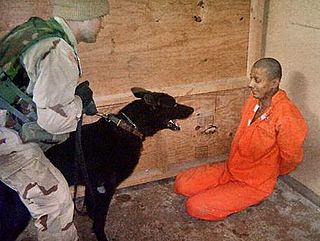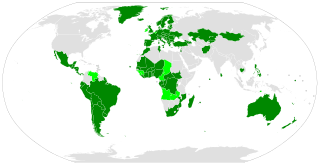International human rights instruments are the treaties and other international texts that serve as legal sources for international human rights law and the protection of human rights in general. There are many varying types, but most can be classified into two broad categories: declarations, adopted by bodies such as the United Nations General Assembly, which are by nature declaratory, so not legally-binding although they may be politically authoritative and very well-respected soft law;, and often express guiding principles; and conventions that are multi-party treaties that are designed to become legally binding, usually include prescriptive and very specific language, and usually are concluded by a long procedure that frequently requires ratification by each states' legislature. Lesser known are some "recommendations" which are similar to conventions in being multilaterally agreed, yet cannot be ratified, and serve to set common standards. There may also be administrative guidelines that are agreed multilaterally by states, as well as the statutes of tribunals or other institutions. A specific prescription or principle from any of these various international instruments can, over time, attain the status of customary international law whether it is specifically accepted by a state or not, just because it is well-recognized and followed over a sufficiently long time.

In an extradition, one jurisdiction delivers a person accused or convicted of committing a crime in another jurisdiction, over to the other's law enforcement. It is a cooperative law enforcement procedure between the two jurisdictions and depends on the arrangements made between them. In addition to legal aspects of the process, extradition also involves the physical transfer of custody of the person being extradited to the legal authority of the requesting jurisdiction.
Cruel and unusual punishment is a phrase in common law describing punishment that is considered unacceptable due to the suffering, pain, or humiliation it inflicts on the person subjected to the sanction. The precise definition varies by jurisdiction, but typically includes punishments that are arbitrary, unnecessary, or overly severe compared to the crime.

Psychological torture or mental torture is a type of torture that relies primarily on psychological effects, and only secondarily on any physical harm inflicted. Although not all psychological torture involves the use of physical violence, there is a continuum between psychological torture and physical torture. The two are often used in conjunction with one another and often overlap in practice, with the fear and pain induced by physical torture often resulting in long-term psychological effects, and many forms of psychological torture involving some form of pain or coercion.
There are cases, both documented and alleged, that involve the usage of torture by members of the United States government, military, law enforcement agencies, intelligence agencies, health care services, and other public organizations both in and out of the country.

The Inter-American Convention to Prevent and Punish Torture (IACPPT) is an international human rights instrument, created in 1985 within the Western Hemisphere Organization of American States and intended to prevent torture and other similar activities.

The Optional Protocol to the Convention Against Torture and Other Cruel, Inhuman or Degrading Treatment or Punishment is a treaty that supplements to the 1984 United Nations Convention Against Torture. It establishes an international inspection system for places of detention modeled on the system that has existed in Europe since 1987.
The European Convention for the Prevention of Torture and Inhuman or Degrading Treatment or Punishment was adopted by the member states of the Council of Europe, meeting at Strasbourg on 26 November 1987. After the European Convention on Human Rights, the Convention for the Prevention of Torture is widely regarded as being one of the most important of the Council of Europe's treaties. The Convention marks a fresh and preventive approach in handling human rights violations. It was subsequently amended by two Protocols. Additionally, the Committee for the Prevention of Torture was established to comply with the provisions of the convention. This body is enabled to visit any place within the jurisdiction of the states' parties where people are deprived of their liberty in line with the articles of the convention.
Article 3 of the European Convention on Human Rights prohibits torture, and "inhuman or degrading treatment or punishment".
Article 3 – Prohibition of torture
No one shall be subjected to torture or to inhuman or degrading treatment or punishment.
In law, the principle of aut dedere aut judicare refers to the legal obligation of states under public international law to prosecute persons who commit serious international crimes where no other state has requested extradition. However, the Lockerbie case demonstrated that the requirement to extradite or prosecute is not a rule of customary international law. The obligation arises regardless of the extraterritorial nature of the crime and regardless of the fact that the perpetrator and victim may be of alien nationality. It is generally included as part of international treaties dealing with an array of transnational crimes to facilitate bringing perpetrators to justice.
The Institute of Therapy and Investigation into the Effects of Torture and State Violence is a multidisciplinary non-governmental organisation based in Bolivia. It offers assistance to those affected directly or indirectly by torture and state violence through rehabilitative means.
Papua New Guinea (PNG) has a population of 6.8 million, nearly half of which is under 18 years of age. Public trust in the justice system has been eroded, and the country’s significant crime problem exacerbated, by brutal responses from police against those they suspect of having committed offences, and the routine violence, abuse and rape carried out by police against persons, including children, within their custody. Many incidents are cases of opportunistic abuses of power by police instead of their following official processes. While a raft of measures have been assembled in order to improve conditions and processes for youths within the justice system, their success has been hampered by a severe lack of implementation, insufficient resources, and failure to impose appropriate penalties on authorities for failure to adhere to their provisions.
Prisoners' rights in international law are found in a number of international treaties. For the most part these treaties came into existence following the two World Wars and the body of law continues to be added to and amended.
The Republic of Uruguay is located in South America, between Argentina, Brazil and the South Atlantic Ocean, with a population of 3,332,972. Uruguay gained independence and sovereignty from Spain in 1828 and has full control over its internal and external affairs. From 1973 to 1985 Uruguay was governed by a civil-military dictatorship which committed numerous human rights abuses.

Zaoui v Attorney-General was the final judicial decision concerning Algerian refugee Ahmed Zaoui before the objections of the Security Intelligence Service concerning Zaoui's alleged threat to national security were withdrawn in September 2007, allowing him to remain in New Zealand. The judgment of the Supreme Court of New Zealand was concerned with the proper interpretation of article 33 of the United Nations Convention Relating to the Status of Refugees 1951 and section 72 of the Immigration Act 1987.

The Committee Against Torture (CAT) is a treaty body of human rights experts that monitors implementation of the United Nations Convention against Torture by state parties. The committee is one of eight UN-linked human rights treaty bodies. All state parties are obliged under the convention to submit regular reports to the CAT on how rights are being implemented. Upon ratifying the convention, states must submit a report within one year, after which they are obliged to report every four years. The committee examines each report and addresses its concerns and recommendations to the state party in the form of "concluding observations." Under certain circumstances, the CAT may consider complaints or communications from individuals claiming that their rights under the convention have been violated.
Cruel, inhuman or degrading treatment (CIDT) is treatment of persons which is contrary to human rights or dignity, but is not classified as torture. It is forbidden by the Universal Declaration of Human Rights, Article 3 of the European Convention on Human Rights, the United Nations Convention against Torture and the International Covenant on Civil and Political Rights. Although the distinction between torture and CIDT is maintained from a legal point of view, medical and psychological studies have found that it does not exist from the psychological point of view, and people subjected to CIDT will experience the same consequences as survivors of torture. Based on this research, some practitioners have recommended abolishing the distinction.
The prohibition of torture is a peremptory norm in public international law—meaning that it is forbidden under all circumstances—as well as being forbidden by international treaties such as the United Nations Convention Against Torture.
Torture is generally defined as deliberately inflicting "severe pain or suffering" on a prisoner, but exactly what this means in practice is disputed.

On June 8, 2023, the governments of Canada and The Netherlands brought a case against Syria before the International Court of Justice accusing the Syrian Government of torture and other cruel, inhuman and degrading treatment and punishment of its own population beginning at least in 2011 and failing to fulfill its obligations regarding the prohibition against torture violating the United Nations Convention Against Torture.








